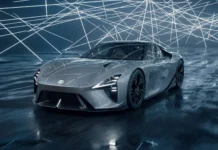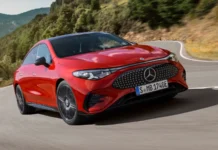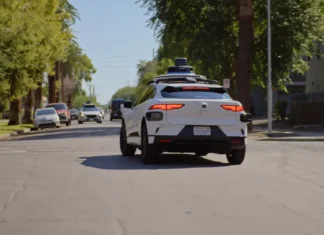Let’s say you wanted something fast, sporty and electric to impress your buddies at the local Hot Yoga den but you don’t have an extra 100K to blow – what do you do? Well, if you want two seats and a similar type of battery packs used by Tesla, what about a Smart Fortwo Electric? Okay, it’s not particularly sporty and it won’t go very far past 70 mph, at least it’s chic.
I wasn’t kidding about the Tesla connection as Tesla Motors announced a little while back that it will supply electric battery packs and chargers to Daimler AG for an electric version of the Smart car – and here it is.
In place of the hamster-spinning-the-wheel gas engine (a 70 horsepower 1-liter engine), a 30 kW drive motor and 16.5 kWh lithium-ion batteries take its place. Like most modern electric vehicles, the Smart Fortwo Electric has a limited range; in this case it’s about 80 miles. Recharging takes about eight hours using a 220V outlet. If you want eighty percent of a charge (from about twenty percent remaining battery) it will take about three and a half hours.
Using standard 110V – it takes about a day.
Performance is not the bladder-altering experience the Tesla is. In fact, it’s slower than a gas powered Smart Fortwo. Still, on the torrid streets of Fontana, California it drove effortlessly through traffic. I dare say – this electric version of the Fortwo had a better ride too. Yup, the extra weight of the battery pack (well over 200 lbs) sitting on the bottom of the vehicle helped smooth out what is otherwise a jarring ride.
There was no problem merging and passing street traffic.
Air conditioning works well and the fully electric power steering was as good as the unit used in the gas version. Stereo worked fine (although the acoustics in the phone-booth-sized Smart is mediocre at best) and all secondary controls feel just as well made as the regular Smart. The only noticeable difference had to be some of the electric information regarding voltage use and battery life.
Like many electric cars, the Smart Fortwo Electric has a direct, one-speed-like transmission and is whisper quiet. I enjoyed using an electric car’s stealth to sneak up on (deserving) unsuspecting bicyclist riding poorly. Although the Smart is far too small to load a bike within, bike-racks are available, among other racks.
I’m not a huge fan of the Smart Fortwo as it fails to out-charm nearly every competitor – but I do like the electric setup. Perhaps it’s the notion that this easy to drive, easy to park vehicle has a better motivator in its electric variant. Or, perhaps it’s the fact that it shares some bits with the fabulous Tesla.
Either way, it’s a better car than the gas version.
Editor’s Note: Nathan Adlen filed this first drive review from Fontana, California at the annual automotive journalist MPG event.
BTW: If the Smart Fortwo electris is too small for you check out this first look at the soon to be sold Nissan Leaf.
Follow on twitter @TFLcar or watch latest car
review videos on YouTube.


























